
Helena Florence Normanton, QC was the first female barrister in the United Kingdom. In November 1922, she was the second woman to be called to the Bar of England and Wales, following the example set by Ivy Williams in May 1922. When she married, she kept her surname and in 1924, she was the first British married woman to have a passport in the name she was born with. In October 2021, Normanton was honoured by the installation of an English Heritage Blue plaque at her London home in Mecklenburgh Square.

Emma Millinda Gillett was an American lawyer and women's rights activist who played a pivotal role in the advancement of legal studies for women. After local law schools refused to admit her because of her sex, she was admitted by Howard University, a historically black university. Yet the Washington College of Law, which she founded in 1898, did not accept people of color until 1950.
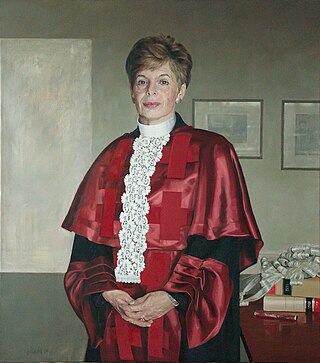
Hazel Josephine Cosgrove, Lady Cosgrove, CBE, is a Scottish lawyer and judge who served as a Senator of the College of Justice from 1996 to 2006. She was the first woman appointed to the College of Justice.
Legal education in the United Kingdom is divided between the common law system of England and Wales and Northern Ireland, and that of Scotland, which uses a hybrid of common law and civil law.
An admission to practice law is acquired when a lawyer receives a license to practice law. In jurisdictions with two types of lawyer, as with barristers and solicitors, barristers must gain admission to the bar whereas for solicitors there are distinct practising certificates.
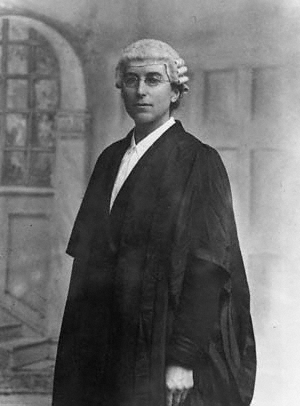
Ivy Williams was the first woman to be called to the English bar, in May 1922. She never practised, but she was the first woman to teach law at a British university.

Ada Emily Evans, was an Australian lawyer and the first female law graduate in Australia.

Cornelia Sorabji was an Indian lawyer, social reformer and writer. She was the first female graduate from Bombay University, and the first woman to study law at Oxford University. Returning to India after her studies at Oxford, Sorabji became involved in social and advisory work on behalf of the purdahnashins, women who were forbidden to communicate with the outside male world, but she was unable to defend them in court since, as a woman, she did not hold professional standing in the Indian legal system. Hoping to remedy this, Sorabji presented herself for the LLB examination of Bombay University in 1897 and the pleader's examination of Allahabad High Court in 1899. She became the first female advocate in India but would not be recognised as a barrister until the law which barred women from practising was changed in 1923.
Strathclyde Law School was established in 1964 and operates within the Faculty of Humanities & Social Sciences at the University of Strathclyde, in Glasgow, Scotland.
Dame Margaret Henderson Kidd, Mrs MacDonald, was a Scottish legal advocate, editor and politician. She was the first woman to become a member of the Faculty of Advocates, the first woman advocate to appear before the House of Lords and before a parliamentary select committee and in 1948, the first British woman King's counsel.
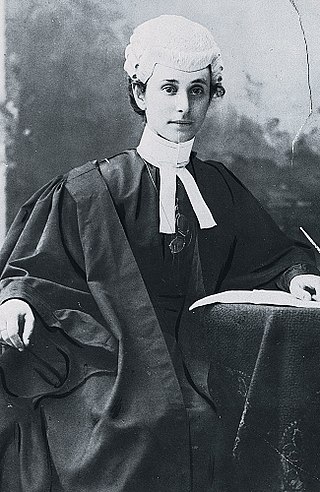
Ethel Rebecca Benjamin was New Zealand's first female lawyer. On 17 September 1897, she became the first woman in the British Empire to appear as counsel in court, representing a client for the recovery of a debt. She was the second woman in the Empire to be admitted as a barrister and solicitor, two months after Clara Brett Martin of Canada.
Gwyneth Marjorie Bebb, OBE was an English lawyer. She was the claimant in Bebb v. The Law Society, a test case in the opening of the legal profession to women in Britain. She was expected to be the first woman to be called to the bar in England; in the event, her early death prevented that, and Ivy Williams was the first woman to qualify as a barrister in England, in May 1922.
Ella Graubart Arensberg was the first female lawyer in Pittsburgh, Pennsylvania, the first female senior partner of a law firm in Pennsylvania, and one of the first women to reach such a position in the USA.
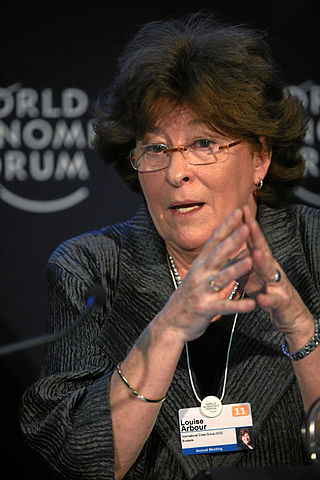
Women in law describes the role played by women in the legal profession and related occupations, which includes lawyers, paralegals, prosecutors, judges, legal scholars, law professors and law school deans.
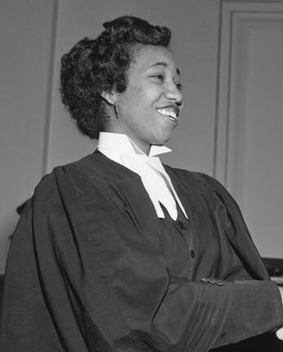
Violet Pauline King Henry was a Canadian lawyer.
Shirley Hilda Stanley Smith was a lawyer from New Zealand.
Prior to the 20th Century, there were few women in law in the United Kingdom. Prior to the Sex Disqualification (Removal) Act 1919, women were not permitted to practice law in the United Kingdom. By 1931 there were around 100 female solicitors. The first female-only law partnership was founded in 1933. In 2010, a report by The Lawyer found that 22 percent of partners at the UK's top 100 firms were women; a follow-up report in 2015 found that figure had not changed. Since 2014, a number of large corporate firms of solicitors have set gender diversity targets to increase the percentage of women within their partnerships. By 2019, 51% of British solicitors were women.
Beatrice Honour Davy was a British barrister, and later, solicitor. She was amongst the first women to be called to the bar once the legal barriers to entry for females were dismantled in 1919. In 1922, she and seven others were the first women ever admitted to the Middle Temple. Davy was the first woman to appear as advocate at the Devon Assizes, winning a 1923 divorce case for her client. After she requalified as a solicitor in 1931, Davy and fellow solicitor Edith Berthen established the first all-female law firm in Britain. The firm continued operating until 1951.
Lucile Alexandra Watts was an American judge. After 20 years as a private practice lawyer, Watts was elected a Wayne County Circuit Court judge in 1980. She was the first black woman to be elected as a circuit court judge in Michigan. In 2019, she was posthumously inducted into the Michigan Women's Hall of Fame.

Barbara Avalon Baker is an Australian barrister and former judge, who is the 29th and current governor of Tasmania since 16 June 2021. She served on the Federal Circuit Court of Australia from 2008 to 2021.










